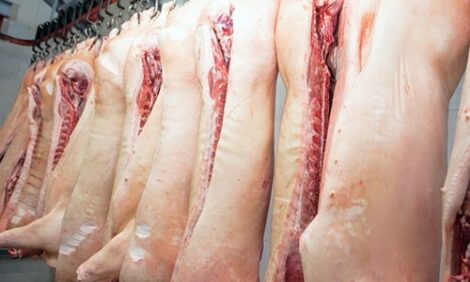Study Finds Grain Size Affects Swine Performance
MANHATTAN, Kan. – To the bare eye, the difference in size between particles of grain may seem insignificant, but it can make a big difference when feeding pigs, according to researchers at Kansas State University.
|
Need a Product or service?
|
|
Drawing from previous trials, they’ve found that finely-grinding grain (to about 700 microns by industry standards) and adding fat improves the pig’s performance and the swine producer’s profitability.
But both fine grinding and adding fat can create problems with the feed not flowing and "bridging" in feeders and bins, researchers say.
"It’s a feed management issue," said graduate student Crystal Groesbeck, who has led the trials for K-State Research and Extension. "When feed gets caught up in bulk bins and doesn’t flow, pigs don’t eat. We wanted to take a look at how the type of feed mill used to grind corn affects its flow ability."
Groesbeck’s work showed that grain ground with a roller mill is more uniform than grain ground with a hammer mill. As a result, roller-milled ground feed flows better than does hammer-milled feed.
"The advantage in flow ability is so great that when adding 6 percent fat to roller-milled corn, the flow ability of the feed was similar to hammer-milled corn with no fat added," she said.
That’s important for farmers, Groesbeck adds, because it’s practical: "If you improve your grind, you improve your profits," she said.
Each farmer will need to determine the right combination of particle size and added fat for their specific feeding program.
K-State’s research so far has looked only at ground corn, but Groesbeck said other trials are planned.
Source: Kansas State University - 4th June 2003


















